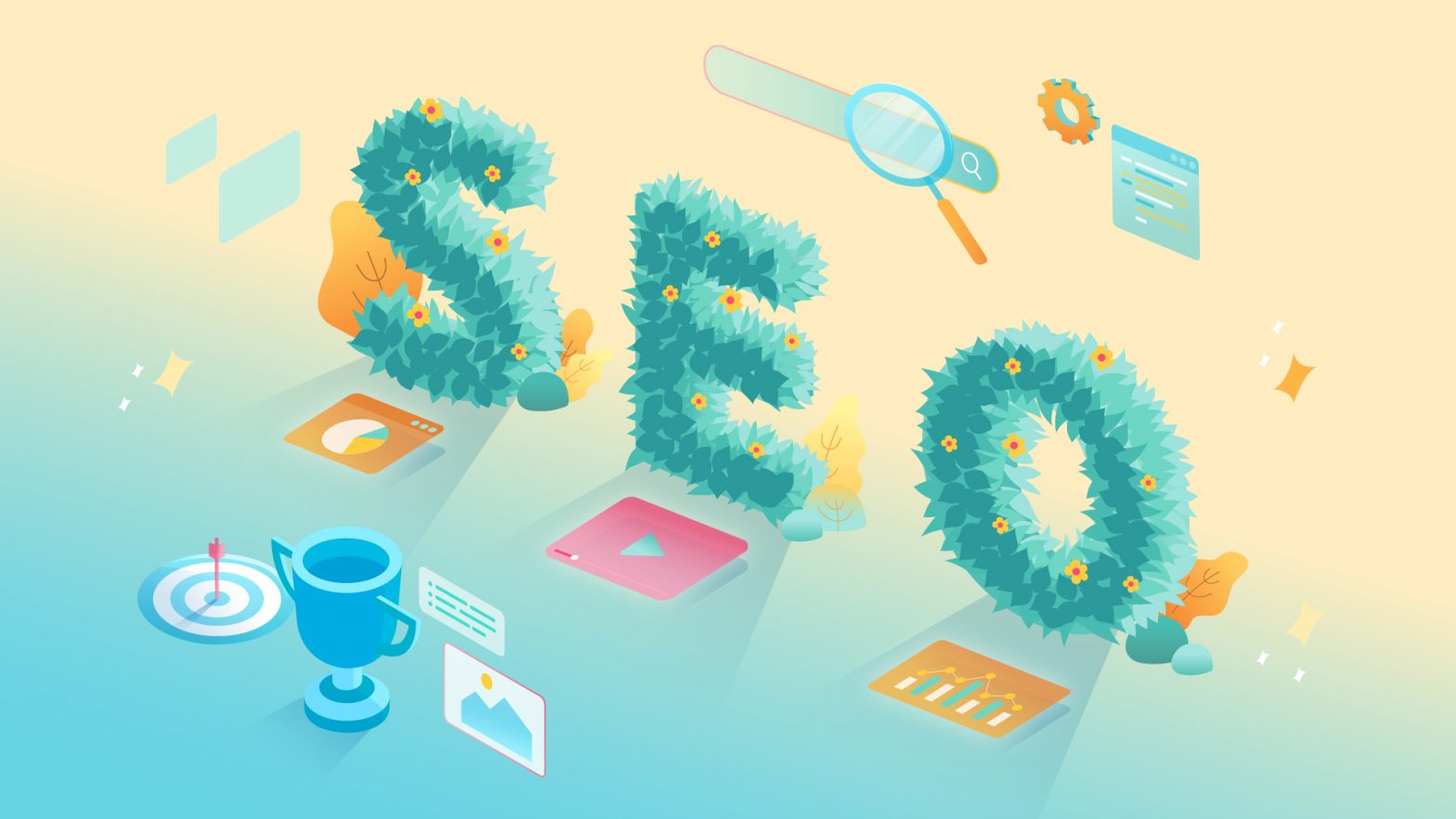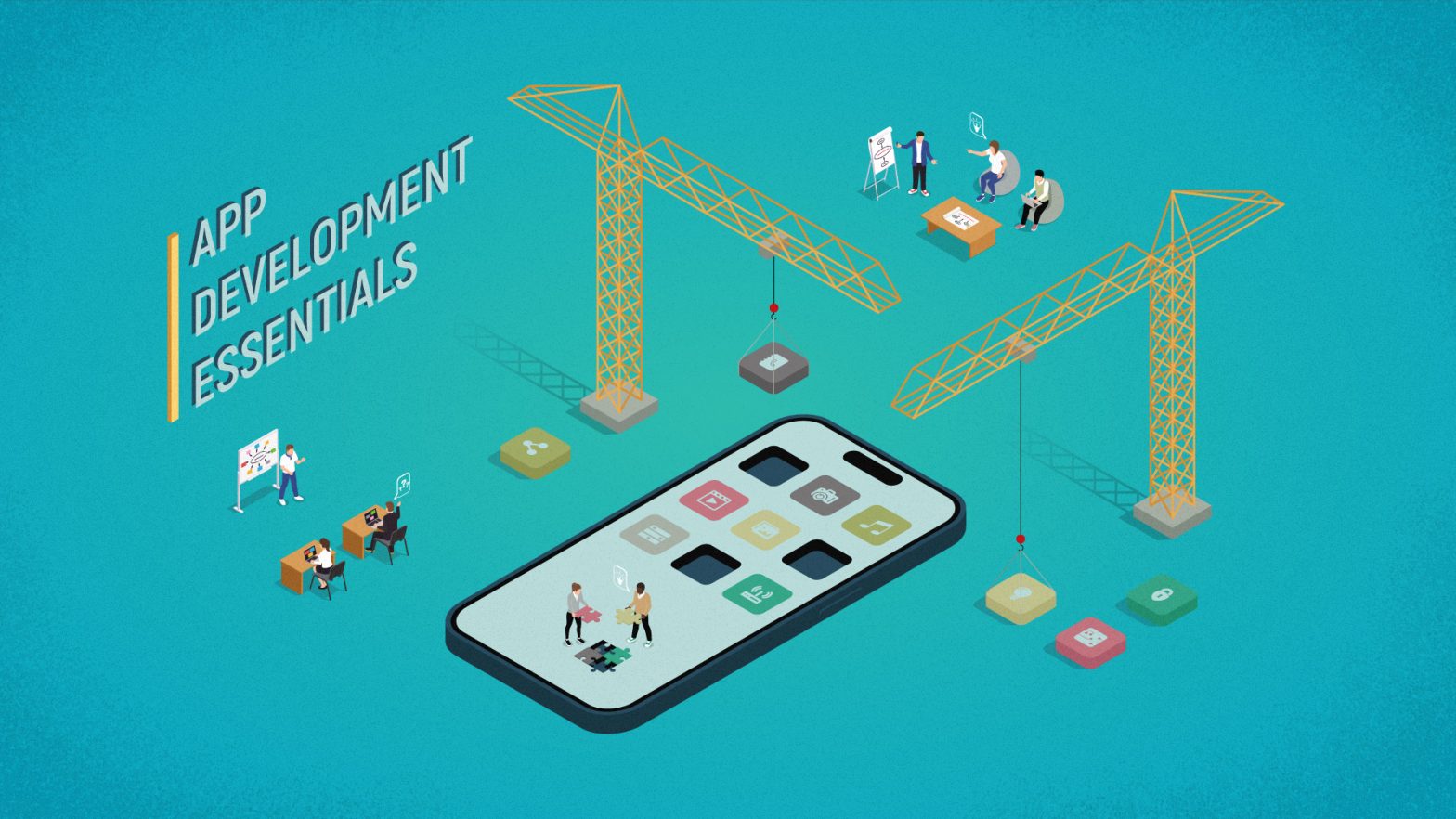Running a startup is a journey full of trials and tribulations. The very concept of such a business, which relies on perceived demand for a particular solution, is a constant source of uncertainty.
According to statistics, 90% of startups ultimately fail.
This abysmal outlook can be attributed to several factors, the top being the lack of product-market fit, followed by digital marketing problems. No wonder this is so when generating demand and building brand awareness are the most important steps when it comes to landing new business opportunities.
Regardless of how effective and powerful your solution is, If your target audience doesn’t know about it, you won’t be able to attract high-quality leads or make a profit. So, having a well-thought-out digital marketing strategy goes a long way toward maximizing your odds of growing your startup.
In this article, we’ll discuss eight digital marketing mistakes that can hinder your startup growth and send your once-promising solution into obscurity.
#1. Creating Content Without Understanding Your Audience
Throwing darts in the dark — that’s how creating content without understanding your audience’s needs and pain points feels like. And it will result in producing content your potential audience won’t find relevant or valuable. To avoid coming across as only trying to push your agenda, it’s essential to create content that will resonate with your audience.
But how do you do that?
Create Detailed Buyer Personas
Since a one-size-fits-all approach won’t cut it, you should go beyond the usual skin-deep buyer personas. Before developing your content marketing strategy, make sure to research and analyze your audience, their challenges, buying habits, and expectations in detail. Once you build these fictionalized representations of your ideal customers, it will be much easier for you to create content that addresses their priorities instead of your own.
When developing buyer personas for your startup, consider the following:
- Demographic data such as age, gender, education, income level, ethnicity, marital status, and similar information
- Psychographic data, including your potential customers’ personal characteristics, goals, beliefs, motivations, values, spending behavior, interests, and attitudes
- Benefits your product or service or how it improves your buyer personas’ lives
- Potential objections that will give you insight into why potential customers might consider not buying your solution.
To obtain this information, interview and analyze your existing customers and prospects, but also check out your direct competitors’ target audience. It’s also worth noting that your product or service can appeal to different types of customers for different reasons, so you need more than one buyer persona to reflect this variety of use cases and particular needs.
Do Keyword Research
Now that you better understand different segments of your audience and what makes them tick, it will be easier for you to target them with keywords tied to their specific pain points. Create content/pages that have a very distinct aim aligned with your buyer personas’ specific rather than broad needs.
Look for the keywords they use when searching for a product or service that will help them solve their pain points and create your content around these topics.
The Body Shop’s Tips & Advice section features helpful content for various skin problems, including oily skin, acne, blackheads, or dry feet. Instead of overly-promotional content focused on its products, the brand primarily tries to educate and assist its audience in overcoming specific pain points. For example, one of their resources addresses the most common reasons behind skin blemishes, discusses the skincare routine for minimizing this issue, and finally, offers products specially designed for blemish-prone skin.
Source: thebodyshop.com
UnscrambleX cleverly creates separate landing pages for each individual type of persona that will use their Unscramble tool. There are three main use cases of Unscramble — the Words with Friends Cheat, Anagram Solver, and Scrabble Word Finder. Not squeezing all of them into a single landing page made it possible to include relevant keywords in the page titles and content itself.
Source: unscramblex.com
#2. Spreading Yourself Too Thin across Social Networks
Social media platforms provide startups with an opportunity to reach their target audience and connect with them without breaking the bank. Apart from building brand awareness and generating new leads, social media also allows startups with shoestring marketing budgets to unearth the preferences and behaviors of their potential customers.
However, it would be huge digital marketing mistake to spread yourself too thin across different social media networks. Even though establishing a digital presence on all available channels, including Facebook, Instagram, Twitter, LinkedIn, Pinterest, Reddit, YouTube, or TikTok, seems like a good idea for showcasing multiple facets of your company, the thing is that you’d only waste your time and resources.
First of all, juggling several social media channels simultaneously is something that only big brands can afford. But more importantly, not every social media platform is a good fit for your startup.
That’s why you need a social media strategy to help you navigate this aspect of digital marketing mistakes. Start by choosing one or two social media channels that will best suit your needs. Here’s what you should take into account:
- Your industry. For example, LinkedIn is the top channel for the B2B industry, followed by Twitter and Facebook.
- Your audience’s preferences. Find out where your prospects and customers are by analyzing your website data and pinpointing where your traffic comes from. It’s also a good idea to research your direct competitors and see where they’re posting and generating the most engagement.
- The type of content you produce. If you have a lot of social media video content, then YouTube, Facebook, and Instagram are the right platforms. Text-based posts work well on Facebook and LinkedIn.
- Your resources. Do you have a social media team or a single person responsible for all your social media efforts? Will they be able to manage all the platforms on which you’d like to build a presence?
By focusing on a single platform, you can create high-quality content and make the most of it.
Being a fashion brand, Many Mornings found Instagram to be its natural medium for sharing photos of their colorful socks. The company also leverages Facebook to get in touch with its audience. Twitter lends itself well to sharing news updates and starting conversations, but the microblogging platform won’t yield too much engagement if you use it for visual storytelling — something Many Mornings heavily relies on.
Source: instagram.com
#3. Not Creating Any Evergreen Content
The top Google search result gets 27.6% of all clicks. At the same time, only 0.63% of all searchers clicked on a result from page two.
This comparison clearly shows how important search engine rankings are for your website traffic, lead generation, and, ultimately, the bottom line.
Evergreen content is one of the best ways to secure top positions in Google searches and attract your target audience, and it would be big digital marketing mistakes to overlook it. It’s SEO-optimized and created around universal topics that never go out of date. Just like evergreen trees, this type of content stays fresh no matter the season. Moreover, its continual relevance makes it sustainable and prevents it from running out of juice long after it has been published.
How to produce evergreen content?
Answer Your Audience’s Questions
Evergreen content is practical, and it’s not about the latest news or trends.
So, check with your customer support reps what questions customers frequently ask. Another way to identify evergreen topics is by running keyword research. This will tell you more about what your audience searches on the internet.
Explaining some complex industry concepts in layperson’s terms can also be a great way to find relevant topics.
Once you pinpoint your evergreen topics and keywords, create your content around it in the form of
- How-to articles
- Guides
- Listicles
- Tutorials
- Glossaries
- 101s
- Industry resources.
Use simple language
Evergreen content isn’t intended for experts. Remember that its purpose is to educate your audience, answer their questions, and help them understand complex concepts.
Therefore, drop high-flown language, industry lingo, and buzzwords. Make your content easy to read and understand so that even beginners can get value from it.
Optimize for Search Engines
One of the reasons why evergreen content is a must-have on your website is that the fact that people often search for these topics. By creating high-quality, well-optimized content that covers these topics in an in-depth manner, you’ll start showing up among the search results and climbing the search rankings.
Apart from using relevant, preferably long-tail keywords throughout the content body, it’s essential to add them to URLs, titles, subheadings, and ALT text. Don’t forget to implement internal links that will connect relevant topics and provide your readers with additional resources.
Update Regularly
To prevent your evergreen content from sinking into obsolescence, make sure to revisit it regularly. By adding new bits of information, fixing broken links, including new visuals, and promoting it again on social media like using advertising on TikTok, you’ll breathe new life into your evergreen content and make it last longer.
Zoho’s How to Write an Effective Email guide is a textbook example of evergreen content. It covers a fairly broad topic by highlighting the most important elements every effective email should contain. Even someone who’s a complete newbie in email marketing can easily find their footing with the help of this A-Z resource.
Source: zoho.com
#4. Overselling Your Product
While you should educate your prospects and highlight the benefits of your product, be careful not to come across as pushy and salesy.
In an attempt to illustrate how valuable your solution is and how it can help your prospects, you can easily end up overwhelming them with too much information. This can be particularly the case with the homepage sales copy. Many startups try to squeeze everything they can into the home page, thus cluttering it with content that’s not meaningful to potential customers.
Here are some principles to follow.
Tell Your Audience What Your Product Can Do for Them
The trick is to find the sweet spot where you can discuss your product without overselling it.
Don’t try to impress potential customers by listing all the product features you’re so proud of because this technical jargon will only alienate them. Instead of that, go for the what’s in it for them tactic and focus on how the product will make prospects’ lives easier.
Be Concise
Don’t get carried away with your copy. The average reader tends to spend only 37 seconds on content, and if you bombard them with a wall of text, the odds are they will give up before you can get your message across.
Use short sentences and organize your benefits into bullet points so that readers can easily scan and find the information they need. Avoid using big, pretentious words since you can pack a lot more punch with an approachable, easy-to-understand style.
January’s homepage captures attention and sparks interest in its target audience thanks to its informative, concise, and to-the-point copy. There’s nothing overly promotional or redundant on this page — every element has its purpose, and it’s to tell potential customers how they will benefit if they decide to use the solution.
Source: january.ai
#5. Not Enough Content That Caters to BOFU
The bottom of the funnel (BOFU) is a critical stage in the buyer’s journey, as it’s the moment when prospects weigh their options and decide whether they will purchase from you or turn to your competitors. So, it’s only logical to have dedicated, well-thought-out content that will cater to the needs of these prospects.
Many content marketers focus too much on the top of the funnel (TOFU) and generating awareness with their content, forgetting that some prospects are in the decision stage of the buyer’s journey.
Potential customers who are at the bottom of the funnel already understand what their problem is and are aware your product could be just what they need. That’s why effective BOFO content should be sales-driven.
To deliver the final push and encourage your sales-ready prospects to make a move, use the following BOFO content types.
1. Product Comparisons
Potential customers who have reached the bottom of the funnel already know a lot about available solutions. Product comparisons put several products or services side by side and highlight their unique selling points.
By having clear-cut pros and cons of these products in front of them, prospects can see how they stack up against each other and identify which one fits their needs best.
Each Night’s best mattresses guide offers an in-depth analysis of the best mattresses based on different categories. That way, their readers can understand each product’s advantages and downsides, allowing them to make a more informed decision.
Source: eachnight.com
2. Case Studies
There’s no better way to convince your prospects to convert than by showing them the success others from their industry achieved with your product or service. That’s why case studies can do wonders for the BOFU stage.
Highlight pain points your existing customer had before they purchased your solution, and illustrate the outcomes they got with testimonials and reliable, authentic data. It’s best to provide a step-by-step explanation of the particular situation and use a before-after bridge to emphasize the improvements your product made possible.
A Hubspot case study states that Avison Young, a global real estate advisor, increased CRM adoption from 23% to 90% and then goes on to explain how that happened and what particular issues the solution helped overcome.
Source: hubspot.com
6. Lack of Interactivity
In some cases, visually-oriented content is much more impactful than text-based blog posts. Consumers are tired of being passive recipients of marketing messages — they want to be involved in content creation and take on a more proactive role in the process.
So, forcing your prospects to almost exclusively consume your content by reading would be digital marketing mistakes.
Apart from video and infographics, you should include interactive content in your marketing strategy. This format is even more engaging because it requires a higher level of prospect participation.
With interactive content, you’ll be able to:
- Attract high-quality leads and keep them on your site longer
- Capture your prospects’ data
- Increase the chances that they will visit your site again.
Some of the types of interactive content you can use to grab your audience’s attention are:
Quizzes
They are fun and will allow you to capitalize on people’s desire to learn something more about themselves.
Calculators
These tools can be both entertaining and valuable, depending on the industry. Calculators are great for generating leads and give you valuable insight into your audience’s needs and interests.
ATH’s Protein Calculator tool is an excellent example of interactive content that adds value to potential customers. At the same time, the company uses it to collect prospect information and generate new leads.
Source: ath.co
Interactive Ebooks
Enhance this traditional digital content format by adding animations, videos, audio files, and other interactive elements. Your readers will be immersed in content thanks to the many different touchpoints with which they can interact.
Polls and Surveys
Find out more about your prospects’ opinions and preferences while giving them an opportunity to have their say. It’s a win-win interactive resource that can help you collect relevant data while showing you care about your audience.
7. Not Allowing Customers to Help You Sell Your Brand
By not leveraging the power of social proof in sales, you’re leaving money on the table. Your happy customers are the best ambassadors of your brand, so make sure to let them help you sell.
60% of people say user-generated content (UGC) is more authentic than other types of marketing content. Photos, videos, testimonials, reviews, and similar posts created by customers and published on social media or other digital channels will spread the word about your brand and land you a lot of new business opportunities.
Apart from being more trustworthy than the content created by brands, UGC also helps you:
- Boost conversions
- Build more meaningful relationships with your audience
- Create a strong community
- Improve your rankings and visibility on search engines.
Last but not least, UGC is more affordable than professional brand awareness campaigns.
It’s worth mentioning that this type of content is very flexible, meaning you can post it on social media, include it in your email campaign, or place it on your landing and product pages to serve as a trust signal and boost conversions.
Cluse doesn’t limit UGC to social media channels — the brand showcases its customers’ photos on the homepage and product pages. Such a bold approach encourages visitors to make a purchase and participate in the brand’s UGC campaign with their photos. This way, Cluse humanizes its promotional efforts and gives them a personal touch.
Source: cluse.com
Wrapping Up
Growing your startup doesn’t leave much room for making digital marketing mistakes. This applies to your digital marketing activities too. Since your brand reputation is at stake, make sure to avoid the steps that can hinder your success.
Author: Brent Zahradnik, founder of AMZ Pathfinder.








